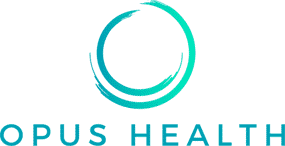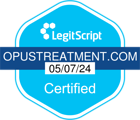Opiate addiction and abuse are some of the most significant mental health issues in the United States. Opiates are highly addictive, yet millions of prescriptions are written every year. Opiates include prescription drugs that come from opium. Opium naturally occurs in poppy plants and seeds.
Opiates and opioids treat pain ranging from mild to severe. Using these drugs can also create euphoria and physical dependence, contributing to the high abuse rates.
Heroin is also a part of this drug class. Unfortunately, many people start using prescription opioids or opiates legitimately, and then; they progress to the use of heroin after they develop an addiction and dependence.
The following are answers to six of the most common questions people often have about opiate drug addiction or opiate detox options.
1. What’s the Difference Between Opiates and Opioids?
The terms opiate and opioid are frequently used interchangeably with one another. There are some minor differences, however.
Opiate, technically, refers to natural opioids. Naturally-derived opioids from the poppy plant include heroin, codeine, and morphine. Opioids more broadly can refer to natural, synthetic or semi-synthetic drugs interacting with the opioid receptors on the nerve cells in your body and brain.
Opioids include not only heroin but also oxycodone and hydrocodone, and fentanyl, which is an entirely synthetic opioid.
Oxycodone, hydrocodone, hydromorphone, and oxymorphone are semi-synthetic. Along with fentanyl, tramadol is also synthetic.
2. How Do Opiate and Opioids Affect the Body?
Opiates and opioids bind to receptors on cells in the brain, spinal cord, and other organs. The receptor sites significantly affected by opiates and opioids include those that play a role in controlling pleasure and pain. As an opioid attaches to receptors, it blocks pain signals that your brain sends to your body. There’s also a release of large amounts of dopamine.
That flooding of dopamine into the brain is part of why they’re so addictive.
- Some of the effects of opioids in the short term include feelings of relaxation and happiness.
- They can also cause drowsiness and confusion.
- Opioids lead to nausea and constipation, and slow breathing for some people.
- When your breathing slows down because of the effects of opiates, it can cause hypoxia. Hypoxia means too little oxygen is getting to your brain.
- Hypoxia can also cause coma, brain damage, or death.
- An opioid overdose can occur when your breathing slows too much.
3. Why Are Opiates Addictive?
Both opiates and opioids are highly addictive, leading to an opioid use disorder. The general explanation for the addictive nature of these drugs is that they affect and disrupt the neurochemical systems in our bodies. When you take opiates or opioids, they boost your reward pathway chemicals like dopamine. As the reward pathway is activated, it reinforces drug-seeking and using behaviors.
While you initially might choose to take an opiate, once your reward cycle is activated and your chemical transmission systems are hijacked, it’s no longer in your control. That compulsive loss of control is why addiction is a disease.
- You may experience intense cravings, and your body can also become dependent on opioids. Your body will struggle to produce its own neurotransmitters, so you’ll need the drug just to feel normal.
- Initially, many people feel like opioids give them a break from their thoughts and mind.
- They can experience physical relaxation and slower thoughts and feelings. There’s a sense of escape from reality, but with repeated use, the effects decline, and you’re left with the adverse results only.
There are three terms to be aware of—addiction, tolerance, and dependence. Each is different from one another but often occurs together.
- An addiction is a chronic disease. Key symptoms of opioid addiction include uncontrollable, compulsive, and continued use despite negative consequences. Addiction leads to long-lasting brain changes.
- Tolerance means that you need higher doses of a drug to get the desired effects. Even if you’re using opioids only by prescription for chronic pain, for example, you can develop a tolerance.
- Drug dependence means your body’s neurons adapt only to function “normally” when the drug is present. You could experience withdrawal symptoms if you’re dependent and try to stop taking opioids suddenly.
4. How to Beat Opiate Addiction On Your Own?
Beating opiate addiction on your own is theoretically possible but somewhat unlikely. First, you have to go through opiate detox.
- During detox, your body experiences withdrawal symptoms.
- Opiate withdrawal can be very uncomfortable.
- You may experience physical symptoms similar to the flu and psychological symptoms like anxiety or depression.
If you opt for medical detox, you can receive treatment and monitoring. There are several medications approved to help with symptoms of opioid withdrawal to reduce cravings and help you get through the period more comfortably.
Going through detox is only one part of treatment.
- From there, you will likely need a combination of different therapy approaches.
- Typically, the longer someone participates in evidence-based treatment, the more likely they will succeed in their recovery.
- When you try to overcome opiate addiction on your own, you may be able to stop using in the short term, but maybe not in the long term. You might not deal with the underlying contributors to your addiction, making long-term recovery unlikely.
If you don’t think an inpatient treatment facility is right for you, outpatient opioid rehab might be ideal for your needs.
5. What Percent of Opiate Addicts Stay Clean?
Addiction is a chronic, relapsing disease. That doesn’t mean long-term recovery isn’t possible, but it does mean sustained abstinence from opioids often requires professional treatment and a variety of approaches.
Relapse is when you return to drug use after a sustained period of abstinence. It’s not uncommon to relapse, but it’s also something that you can overcome.
Relapsing tends to be part of the recovery process, and it can have value. First, relapse doesn’t mean you or your treatment are a failure. Instead, you should consider that a relapse helps you identify triggers you didn’t know were an issue for you. You can also learn more about how your treatment should look going forward.
For many people, relapse helps them become more assertive in their recovery, although relapse is not inevitable.
Relapse rates are relatively high but go down with effective treatments like medication-assisted treatment.
6. How to Get Help for Opiate Addiction Without Insurance?
Insurance, including private and government health insurance, will often cover some (or all) of addiction treatment and mental health care costs. If you don’t have insurance, that doesn’t mean you’re without options.
For example, most states have some type of financial assistance available for people who need drug rehab. There are also locally-operated substance abuse treatment programs. Another option is to contact rehab programs and ask them about payment options. There may be payment plans or financial assistance available.
Getting Help
We encourage you to contact the caring Opus Health team by calling 855-953-1345. We can help you explore the available treatment options that may work for your needs, whether you’re battling opioid addiction or another substance use disorder to a different illegal drug or class of drugs, looking for inpatient or outpatient programs, we’ve got you covered.













